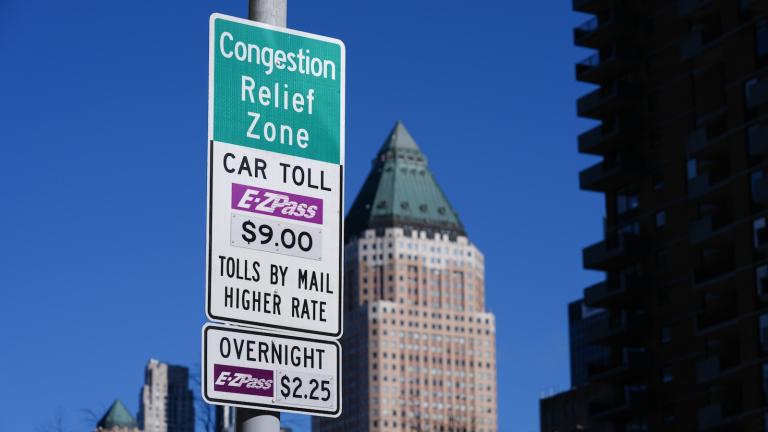“This craziness is not sustainable,” concludes The New York Times op-ed columnist Bob Herbert, and he’s talking about the economy, not the environment. He continues:
Without an educated and empowered work force, without sustained investment in the infrastructure and technologies that foster long-term employment, and without a system of taxation that can actually pay for the services provided by government, the American dream as we know it will expire.
And without petroleum. Oil is shooting over $100 per barrel, caused ultimately by a looming decline in global supply, and exacerbated by rising demand in China and India, foolish policies such as the occupation of Iraq, and repressive regimes such as in Nigeria. And if we are serious about reducing carbon emissions to near zero in order to avert climate catastrophe, we must scale back our use of petroleum to near zero.
While we’re learning to live without petroleum, we need to rebuild the workforce, infrastructure, technologies, and tax system, as Herbert suggests. I will argue in this post that we can accomplish all of these goals by replacing internal combustion engines with electric motors, using other energy sources for other petroleum uses, and perhaps most importantly, by changing the arrangement of the buildings, production, and people in our society in order to eliminate the need for so much petroleum.
In order to understand how to accomplish all of this, we need to know how petroleum is used, so let’s look at some numbers!
According to the Energy Information Administration, in 2006, 68 percent of petroleum was used in this country for transportation, 25 percent for industry, and 7 percent for everything else (mostly heat). I used government data (called input-output tables) from 1997, which has the advantage of breaking down petroleum into tiny little pieces, based on the dollars actually spent; Charles Komanoff used 2000 data [PDF] on use of quantities of liquid to try to figure out how petroleum is used. I’ve put all of these data together in the “petroleum use” tab of my online spreadsheet, called Energy Use. This spreadsheet was also used in my post that concentrated on electricity, “Let buildings heat and cool themselves.” Let’s go through the categories.
Cars: Between 41 percent (Komanoff) and 47 percent of petroleum use is for cars of various sorts. While plug-in hybid electric vehicles may be a good bridging technology, in order to eliminate petroleum use, we will have to eventually move to an all-electric automobile fleet. Can we really replace 3 trillion vehicle miles’ use [PDF] of petroleum with electricity? The Chevrolet Volt will allegedly require 0.4 kilowatt-hours (kWh) of electricity per mile; let’s use one-third of a kilowatt per mile as an average, which conveniently would mean that we would require 1,000 billion kWh with an all-electric fleet. Our entire yearly usage of electricity is four times that amount; we would need to increase our use of coal 50 percent if those electric vehicle kilowatts came exclusively from coal.
The GM Volt is still not a reality. But there are over 35,000 Chrysler GEM cars on the road. GEM cars are an example of a neighborhood electric vehicle (NEV), which I think is eventually what cars will become. I’m a little surprised that there is not more discussion of them. I know, I know — they don’t generally go above 30 mph, but that’s why they are preferable.
According to an article called “Implications of reduced traffic speed on the urban environments,” at 20 mph or less, pedestrians “only” suffer 5 percent fatality rates if struck by a car, while at even 30 mph, 45 percent are killed. It’s much easier to design cities around slow cars then fast ones. But obviously the problem then becomes one of putting buildings closer together. With NEVs, a three-mile drive would take nine minutes, so a suburb would only make sense if most of what people needed — stores, public transit, schools, and doctors — were in close proximity.
Sort of like … New York City. As it happens, we know that 1.73 billion kWhs were required to run the NYC subway in 2006 (see the spreadsheet). Because everything is so close together in NYC, there were untold vehicle trips not taken in NYC. And we know that the 8 million people of NYC, or at least the overwhelming majority of them, could survive without a car. Let’s double that kilowatt-hour number to account for electric buses; figure that a fully electric NYC might require about 3.5 billion kilowatt-hours of electricity per year.
Now let’s imagine that everybody lived in a town or city that was arranged in a similar way. For instance, here in Evanston, Ill., if you live in or close enough to downtown, you could get by without a car, so NYC is not the only example of a potentially car-free area (see this paper on “traditional neighborhood developments.” Also see Christopher Leinberger’s paper on walkable neighborhoods in 30 metropolitan areas).
If 240 million people were using subways and electric buses exclusively, then we would need 30 NYCs worth of electricity, or 30 times 3.5 billion kWhs, or about 100 billion kWhs, which is about 10 percent of what we would need if we wanted to replace all car miles with electric vehicle miles.
What about the other 60 million Americans? I assume that in a sustainable society, they would be farming. Agriculture takes up 2 percent of petroleum use, for farm machinery and heating, and such uses would have to be electrified. And instead of transporting all of that food thousands of miles, in order to cut back on energy use, we will need to have labor-intensive organic farm belts around cities and towns, delivering fresh food daily in electric truck and rail — won’t that be tasty! Which leads us to consider the next petroleum hog:
Trucks: Accounting for 9 percent to 13 percent of petroleum use, long-distance trucks should be replaced by electrified rail. Alan Drake argues that electric rail freight is 8 times more efficient than trucks. I assume that small electric trucks would still be required for work around town.
According to my figures, transit and sightseeing account for about 2 percent of petroleum use, which could obviously be electrified, while school buses alone account for 2 percent. As James Howard Kunstler has argued, in order to cut down the huge fleets of suburban school buses, schools will have to be close to homes — or, as in NYC, public transit would take their place.
Now that living arrangements, transportation, agriculture, and even schools have been transformed into a new American dream, we have a few more categories to clean up:
Construction equipment, which accounts for 2 to 3 percent, will have to be electrified, as will mining, coming in at 1 percent, unless we do the right thing and recycle everything instead; then there’s the 1 percent devoted to the military, which we could also do without.
Air, water, and rail: Rail (about 1 percent) is easy to electrify, but water transport (up to 2 percent), particularly cargo ships, would be very difficult. Worldwide, cargo ships account for twice the quantity of C02 emissions as airplanes. Which leads us to air travel, which accounts for 4 to 8 percent of petroleum use, depending on your methodology. Except for flying over oceans, I think airline travel is doomed in the far future, simply because it cannot be electrified. This means that we need a national high-speed rail network to replace the air system we have now.
All of the uses discussed so far have one remarkable quality: they all involve injecting petroleum products into internal combustion engines (ICE). In fact, 77 percent of petroleum is poured into ICEs. Developed in the 19th century, ICEs are extremely inefficient and might not have made it too far into the 20th century if it weren’t for the miraculous qualities of petroleum: dense, liquid at room temperature, easy to make flow and then to burn, and conveniently located in large underground reserves. None of these characteristics are to be found all together in any other substance, particularly biofuels or hydrogen. Thus, the need to eliminate the internal combustion engine.
But even if we replaced all ICEs with electric motors, if that new electricity all came from coal, we might have to almost double the amount of coal we currently use. If 46 percent of oil use could be replaced by 1,000 billion kWhs, as we saw in the case of cars, then to replace 77 percent of oil would require about 1,700 billion kWhs, or close to the 2,000 billion kWhs supplied by coal.
So while perhaps a grand plan for solar in the deserts of the Southwest or wind farms in the plains of North Dakota and Texas could provide much of that capacity, we could also achieve the same result by restructuring society so that people, buildings, and production are close together.
Manufacturing, which only uses a few percent of oil for heating, should also be located in belts around city and towns in order to minimize the movement of freight and materials. Chemicals, however, require petroleum for the one use that needs to be replaced by something other than electricity: the raw material for chemicals, feedstocks (from 3 percent by dollar amount to 10 percent of petroleum as liquids). This is one area where it may make sense to use sustainably grown biological raw materials — assuming we really need the many toxic and polluting chemicals and plastics that we use.
The rest of petroleum use will either go away when all other petroleum use goes away (the 5 percent for petroleum refineries and the 1 percent for pipelines), when rails are used (the 2 percent used for asphalt), or when natural gas could be used, at least for an intermediate period (10 percent for heat, almost 2 percent for electricity generation).
Buildings close together, neighborhood electric vehicles, high-speed rail, solar/wind/geothermal energy, fresh local food, nearby clean manufacturing, millions of jobs needed to construct and maintain these systems — does this sound like a possible new American dream?


